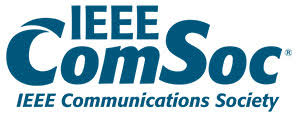Massive Internet of Things (IoT) and Industrial IoT (IIoT) networks create an enormous potential for novel generations of IoT/IIoT applications by leveraging synergies arising through the convergence of consumer and industrial Internet, and creating open, global networks connecting people, data, and “things”. Moreover, the interplay between circular economy and the IoT/IIoT ecosystem provides a fertile ground for innovation and value creation as it maximizes the utilization of assets, and regenerate natural capital for more effective and efficient use. IoT/IIoT can become an enabler of circular economy as it enables the collection of knowledge about asset locations, conditions, quality and performance in real time and over time, and through it indicate possibilities for recycling, remanufacturing, redistribution and new use of assets that are key prerequisites for circular economy innovation. Through this interaction, a series of innovations across the IoT/IIoT landscape have converged to make IoT/IIoT products, platforms and devices technically and economically feasible. However, despite these advancements, the realization of the IoT/IIoT potential requires overcoming significant business and technical hurdles. For instance, IoT/IIoT networks are dynamic needing adaptive behavior at runtime to achieve the required autonomy. Also, scalability in IoT/IIoT is of utmost importance as the number of interconnected devices is growing. The vastly increased demands require highly efficient programmable connectivity, service provisioning and chaining in ways that guarantee the much-needed end-to-end optimizations, addressing dynamic IoT/IIoT application requirements.
To that end, the target of the SIG for the integration of advanced platforms for autonomous IoT/IIoT applications is:
- To develop a pattern-driven framework, built upon existing IoT/IIoT platforms, to enable and guarantee secure and dependable actuation and autonomic behavior in IoT/IIoT applications,
- to support cross-layer intelligent dynamic adaptation, including heterogeneous smart objects, networks and clouds, and
- to develop and integrate smart programmable networking and semantic interoperability
In order to accomplish these goals, this SIG will bring together experts from industry and academia and will provide a forum for discussion and analysis towards the integration of three diverse usage scenarios in the areas of renewable energy, healthcare, and smart sensing through an advanced platform for autonomous IoT applications.
Leaders: Vivek Kulkarni (Siemens AG, coordinator), Nikolaos Petroulakis (FORTH), Luis Sanabria-Russo (CTTC), Kostas Ramantas (Iquadrat informatica SL)

